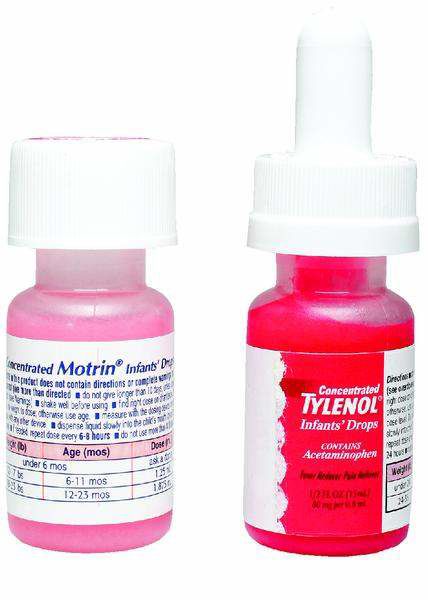Alternating treatments may reduce fever most
Published 5:00 am Thursday, August 31, 2006

- Alternating treatments may reduce fever most
Take a walk down a pharmacy aisle and the dizzying array of choices parents have to reduce their children’s fevers is evident. For most, the choice comes down to children’s formulations of acetaminophen or ibuprofen.
New research suggests the most effective choice might be both.
Trending
Many pediatricians recommend that parents alternate doses of acetaminophen, such as Children’s Tylenol, and ibuprofen, such as Children’s Motrin, to reduce fevers. Until this year, there was little evidence to suggest the practice was safe or effective. Now that a study published in the Archives of Pediatric and Adolescent Medicine has backed the practice, pediatricians are considering what advice to give parents without adding to their confusion or concern about fevers.
Researchers in Israel randomly assigned children with fevers seeking treatment from a physician to acetaminophen, ibuprofen or alternating groups. Each parent was asked to track the child’s temperature and to complete a form designed to measure the child’s stress level.
The researchers found that children who received alternating doses had lower average temperatures as days progressed, and had a much faster decline in stress levels. As a result, those children received fewer overall doses than those getting either acetaminophen or ibuprofen alone. The parents of the alternating group also reported fewer day care absentee days, meaning less work missed by parents.
The researchers cautioned that the effect was not studied in children younger than six months, and that the small numbers involved in the study, less than 500, precluded detection of any serious adverse events.
But the research has sparked debate among pediatricians over the safety of the practice in a less controlled environment.
”I’m concerned that this approach might be applied to telephone care,” says Dr. Barton Schmitt, a Denver pediatrician who wrote a letter to the editor in response to the study. ”The risk for dosage errors and poisoning due to caller confusion remain real on the telephone.”
Trending
Schmitt also expressed concern that emphasizing the alternating dosing strategy might increase parent’s preoccupation with treating a fever.
”Most children can be made comfortable with one (fever-reducer) and increased fluids,” Schmitt says. ”Let’s save dual therapy for unresponsive high fevers and continue our efforts to teach parents that fever is not a cosmic error but rather offers some benefits in fighting infections.”
In 2000, a survey of physicians found half recommend alternating doses to parents. Nearly a third said they relied on recommendations from the American Academy of Pediatrics, even though the pediatricians’ group had no formal recommendation on the practice.
The survey also found that younger pediatricians were more likely to recommend the practice, suggesting they might be more likely to succumb to parental fever phobia, the researchers said.
A survey of parents and caregivers suggested that more than half give their children alternating doses of the two medications, but their method of alternating varies. In about half of the cases, the dosage was incorrect. The study alternated doses every four hours.
Parents often confuse dosing instructions giving children teaspoons of medication instead of drops, or giving children adult formulations rather than children’s doses.
A research review published in April in the Journal of Advanced Nursing found the rates of overdoses in children with fevers have tripled over the last two decades. The researchers expressed concern that some parents used both acetaminophen and ibuprofen without waiting an appropriate amount of time between doses.
”Some parents are giving their children one fever-reducing drug and then trying another type within a few hours if the first one doesn’t have the desired result,” says Anne Walsh, the nurse researcher who conducted the review. ”Parents knowledge about normal body temperature and what constitutes a feverish temperature is poor. They classify mild fever as high and actively reduced temperatures, sometimes normal temperatures, with fever-reducing drugs such as (acetaminophen) and ibuprofen.”
Walsh says parent education should highlight the benefits of mild fever. Parents should check with their doctor about proper fever reducing strategies and doses. Many pediatricians recommend writing down the times and doses administered to ensure proper adherence to physician guidance.
For more information about treating fevers in children, visit the American Academy of Pediatrics’ Web site at www.aap.org.
Markian Hawryluk can be reached at 617-7814 or mhawryluk@bendbulletin.com.








